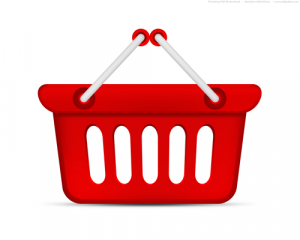3 in-store strategies to drive impulse purchases

The convenience channel has long been known for its cokes and smokes, but if you ask any convenience store retailer, supplier or distributor what really has the ability to drive profits by increasing basket size, they will tell you it's the highly profitable and highly impulsive candy and snacks categories.
"Candy and snacks — both salty and sweet — are very important to a c-store's profitability. These categories carry above-average margins and provide a strong impulse purchase opportunity for many of our guests," Ken Hagler, senior director of merchandising for Tri Star Energy LLC's Twice Daily Convenience Stores.
Alan Tobin, senior manager, c-store category strategy and insights for The Hershey Co., agrees that candy and snacks play a key role in building baskets at c-stores.
"With 47% of purchases being unplanned, and more than 80% of purchases consumed within an hour, a candy and snacks consumer is in the market for these products on pretty much every trip," Tobin pointed out.
So, the question becomes: What are the most effective ways convenience store operators can lean into the candy and snacks categories to drive both impulsive and purposeful purchases?
Retailers and suppliers shared the following tricks of the trade:
1. ENTICEMENT
Twice Daily, operator of 50 c-stores across Tennessee and Kentucky, focuses on its fresh food and beverage offers to drive in-store traffic. Once in-store, Twice Daily emphasizes its candy and snack items to entice extra buys. It does this by strategically displaying these categories on the way to and from destination zones, such as the beverage cooler, fresh food area, and along the sales counter.
"We believe this provides us with the greatest opportunity to garner that additional add-on sale of a candy or snack item to go with a customer’s food or beverage purchase," Hagler explained. "We also merchandise top-selling candy and snack items at the sales counter to capture that last-second impulse purchase to go along with the other items being purchased."
2. LEVERAGING CHECKOUT
The front counter is where shoppers spend the most time dwelling, notes Hershey's Tobin.
"About 17% of a shopper's total time in-store is spent at the checkout. With an average of 23% of candy and snack sales coming from the checkout area, retailers have a huge opportunity to increase basket sizes through maximizing merchandising in this space," he said.
Tobin recommends incorporating one of three merchandising systems at every pay point:
- Counter unit: With limited space, retailers should only merchandise the best-selling brands and items here. About 75%t of candy sales from a counter unit are incremental, he reports.
- Under the counter: Retailers who have executed this method saw an average of a 10 to 12% lift in category sales, with a 36%t increase in frontend conversion, according to Tobin.
- Queue line: Recent Hershey research showed a 56% increase in buyer conversion at the pay point after a queue line was installed.
3. CLEAR & SIMPLE SIGNAGE
Although it seems like an obvious solution, clear and simple signage is a must to communicate specials and promotional offers to capture incremental basket rings.
"One of the biggest gaps we see with the c-stores we work with is not having enough signage and callouts to grab customers' attention, especially when it's a bundle or a price-driven offer, so the customer sees it and gets the chance to make that decision," said Joe Thrash, national trade relations manager for McKee Foods Corp., manufacturer of Little Debbie packaged sweet snacks.
Too often, signage doesn’t make sense in focusing on the bundle offer or is just not there, he explained.
Originally published at Convenience Store News.

